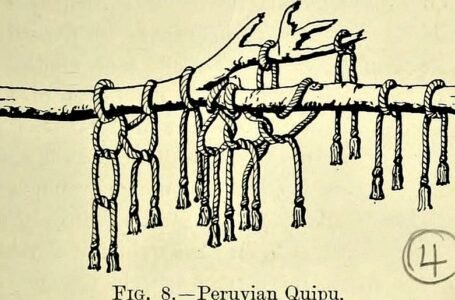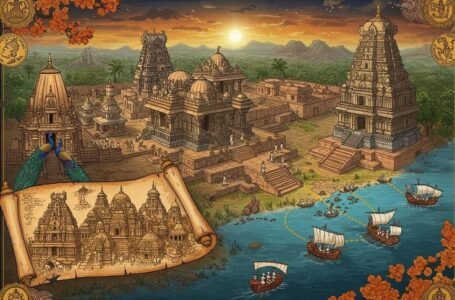The Essence of Navarasa in Indian Classical Arts
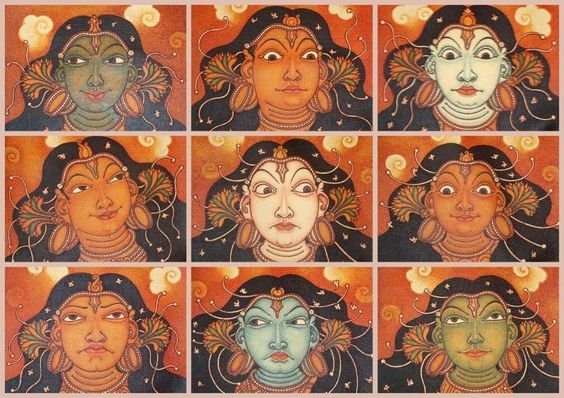
Navarasa, which translates as “new emotions” in Sanskrit, is a key concept in classical Indian art that encapsulates the essence of emotional expression. These nine emotions—Shringar (love), Hasya (laughter), Raudra (anger), Karuna (compassion), Veer (courage), bhayanaka (fear), bibhatsa (disgust), adbhuta (awe), and shanta (peace)—function as universal languages that transcend cultural boundaries. Each quantity enables artists to express complex human experiences and connect more deeply with audiences, enhancing the emotional atmosphere of traditional Indian dance, music and theater This blog series explores the complex ways in which that emotion forms and informs the arts, their profound significance in Indian culture is illuminated.
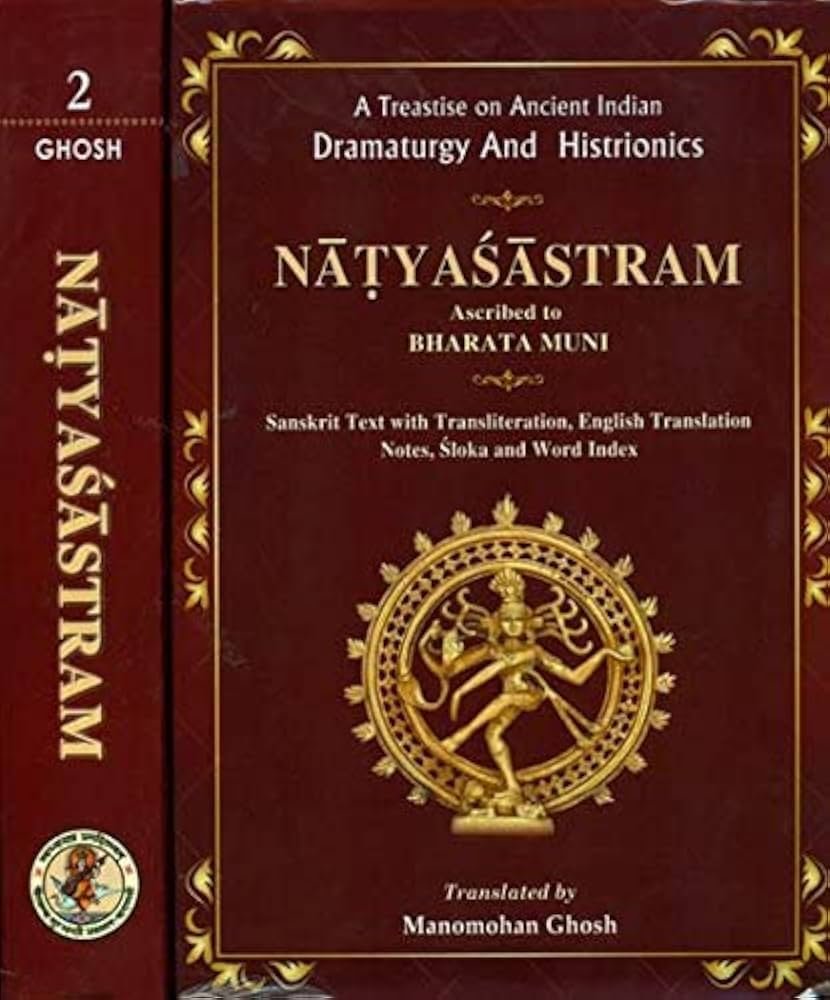
Origin of Navrasa
The origin of Navras can be traced back to Natyashastra, a major work on theater attributed to sage Bharat Muni from 200 B.C. to 200 B.C. emphasizing the central role of emotion in performance. Bharat Muni gives a detailed description of each of the nine melodies, emphasizing how it evokes a melodious response from the audience emotionally.
The significance of navarasa extends beyond artistic expression; It is a form of cultural history and social commentary. Exploring these emotions allows artists to connect with their audiences, creating a shared experience and understanding. This universality allows Navrasa to bridge cultural divides, making it a timeless concept that remains relevant to diverse audiences across generations.
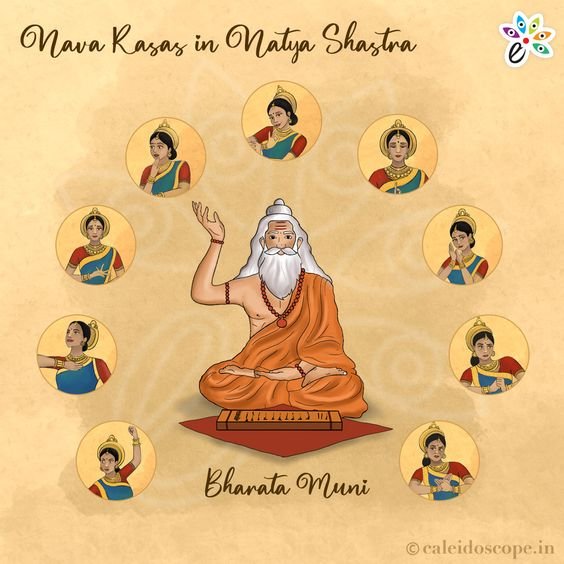
Mythology and Navrasa
Mythology plays an important role in the expression of Navarasa, with each emotion associated with specific deities, epic stories and cultural stories that reflect the depths of human experience These stories not only convey emotions but give moral and philosophical lessons overlapping in Indian cultural thought as well . Let’s explore the mythical origins of each flavor:
- Shringar (Love): Often depicted through the story of divine love of Radha Krishna, Shringar embodies the essence of romantic love. Their desire is for devotional communications to symbolize a sense of love that transcends the material and speaks to the soul. Dance forms like Bharatanatyam and kathak beautifully express beauty through dramatic movements, melodious and emotional facial expressions, creating a deep bond with the audience.
- Hasya (Laughter): Laughter, represented by the playfulness of deities like Ganesh, speaks of joy in life and light-heartedness. In theater and dance, comedy often draws on everyday experiences, inviting the audience to join in the laughter. The use of cleverness and humor serves as a reminder of the importance of happiness, creating community and connecting with viewers.
- Raudra (Wrath): Fierce stories of gods like Durga, fighting evil forces are examples of Raudra. This emotion conveys strength and power, and is often portrayed in dance with strong movements and exciting expressions. Horror is a powerful reminder of the struggle between good and evil, encouraging listeners to consider justice, righteousness and the complexities of human emotion
- Karuna (compassion): The story of Sita in the Ramayana is a touching portrayal of compassion, highlighting the themes of suffering and empathy. The cast evokes a deep emotional connection with the audience, drawing them into the character’s pain and longing. The use of gentle music and heartfelt lyrics enhances the expression of compassion and evokes introspection and compassion in viewers.
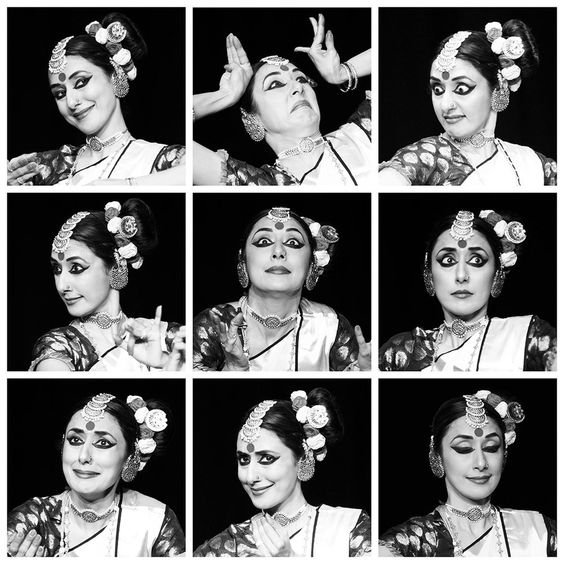
- Veera (Heroism): The stories of Arjuna from the Mahabharata exemplify the hero and celebrate courage and bravery. This idea is often portrayed in dance with powerful and reassuring words, reflecting the struggles and triumphs of the hero and encouraging the audience to reflect on their courage in the face of adversity, making for a fascinating narrative.
- Fear (Fear): Sees the roots of horror in tales of monsters and supernatural creatures, inspiring fear and suspicion. This flavor is expressed through dark themes and haunting music, adding to the emotional danger of theater. The horror scene serves as a cautionary tale, encouraging audiences to confront their own fears and vulnerabilities.
7 .Bibhatsa (Abomination): Often depicted in dramatic imagery, Bibhatsa highlights issues of disgust and moral dilemmas. This passion encourages reflection on social issues, and the performances make them uncomfortable, inviting audiences to engage with the darker sides of human nature
- Adbhuta (miracle): The stories of miracles involving deities like Krishna epitomize the awesome, enthralling the audience with spectacular and thrilling effects. The filmmakers use quirky music and unexpected storytelling to evoke wonder, encouraging viewers to embrace the magic and beauty of life
- Silence (Peace): Representing peace and harmony, silence is often depicted in meditation shows that inspire stillness and contemplation. This pleasure allows listeners to experience a deep sense of peace, often achieved through gentle music and contemplative narratives that encourage peace and self-discovery.
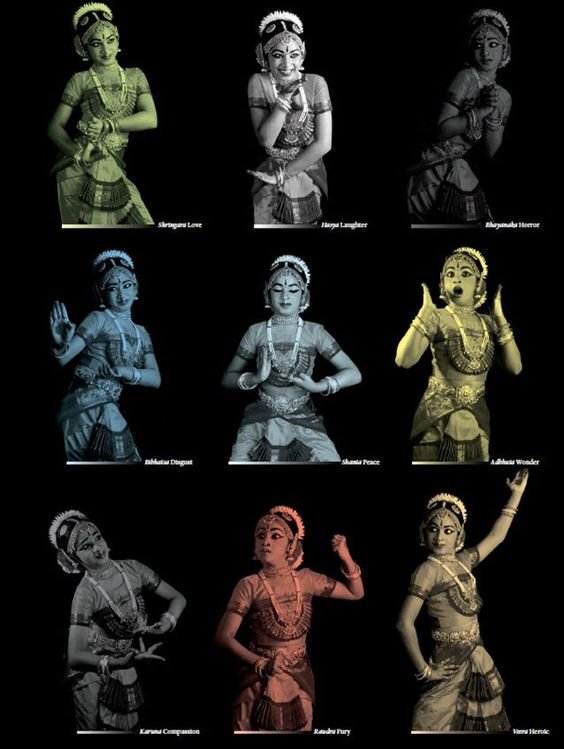
Navarasa in Indian Classical Dance
Classical Indian dances—such as Bharatanatyam, Kathak, Odissi, Manipuri, and Kuchipudi—are profound, movement-driven expressions of Navarasa surprise, the use of facial expressions , and new emotional storytelling techniques.
- Bharatanatyam: This ancient South Indian dance combines intricate footwork, hand expressions (mudras), and emotional facial expressions. Bharatanatyam often focuses on themes of love and devotion, especially with deities like Krishna. A delicate depiction of beauty through music with movement and depth of emotion draws the audience in, making them see the beauty of romantic love
- Kathak: Known for its storytelling skills, Kathak uses quick spins, intricate footwork and expressive acting to evoke a wide range of emotions The dance form often features romantic and humorous themes, especially in the playful interactions of Radha and Krishna . The seamless transitions between different flavors make for dynamic performance, giving the audience a wealth of sensory information.
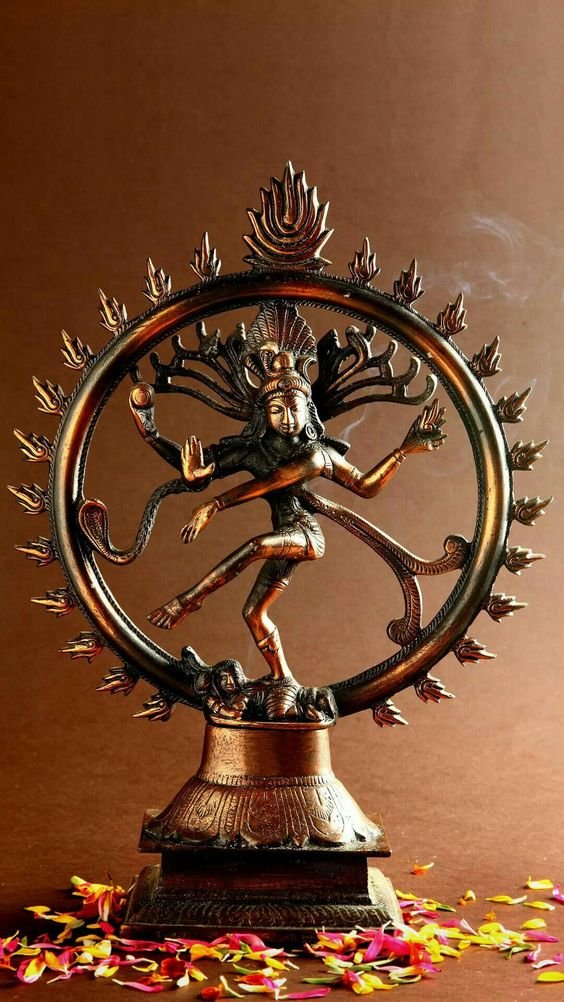
- Odissi: Originating from Odisha, Odissi is characterized by beautiful movements and sculptural postures conveying emotions like love, devotion, passion etc. The main characteristic features of Odissi which show Shringara and Karuna give emotional depth a in the performances is great, drawing the audience into the stories being told.
- Manipuri: This dance emphasizes grace and fluidity, with subtle movement and depth of emotion. Manipuri explores almost exclusively the themes of divine love between Radha and Krishna, creating a soothing atmosphere that invites the audience to experience the beauty of devotional passion.
- Kuchipudi: Known for its dynamic movement and theatricality, Kuchipudi combines drama and storytelling to explore different emotions. The portrayal of strong emotions, especially in the areas of love and desire, engages the audience and encourages them to reflect on their own experiences.
Navarasa in Indian Classical Music
Indian classical music which encompasses both Hindustani and Carnatic. Traditions play an important role in the expression of Navras. Each raga (musical note) is associated with a specific emotion, and skilled musicians skillfully express these emotions through their music.
- Hindustani Music: The ragas in classical Hindustani music are incredibly associated with specific emotions and times of the day. For example, Ragayaman usually performed at night evokes romantic feelings, and the associated Raag Bhimpalasi during the day conveys passion and sorrow. Musicians use improvisation and embellishment to deliver the emotional impact of their music is great , in order to immerse the audience in the emotional expression.
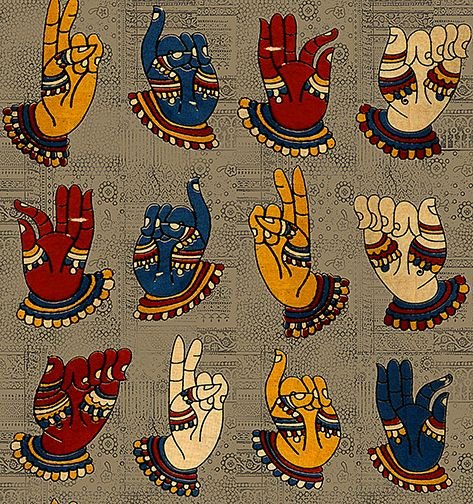
- Carnatic Music: In Carnatic music, compositions (kritis) often explore the nuances of Navarasa, particularly in devotional contexts. The emotional depth is enhanced through intricate melodic patterns and expressive singing techniques that bring the rasa to life. Compositions focused on Karuna evoke deep feelings of empathy, allowing listeners to connect with the emotions portrayed in the lyrics.
Navarasa in Indian Classical Theater
Indian classical theater, including forms like Kathakali and Natyashastra-based dramas, heavily incorporates Navrasa, where the portrayal of characters and emotional arcs hinges on effectively expressing these nine emotions.
- Katha Kali: This classical dance-drama from Kerala relies on elaborate costumes, facial expressions and expressive gestures to convey emotions. Each show tells a story for the audience, using rhythms to evoke a deep emotional response. The intense physicality and visual splendor of Kathakali creates an immersive experience, engaging viewers and inviting them into the world of storytelling.
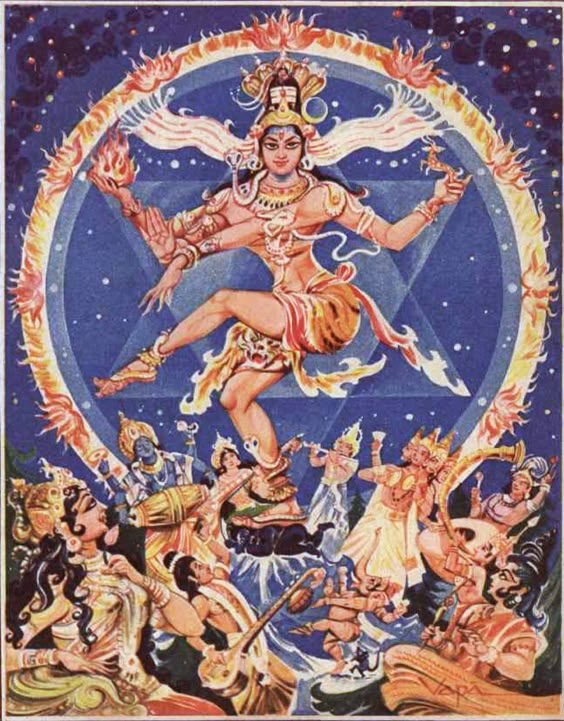
- Natyashastra: This ancient text teaches the principles of drama and theater, and emphasizes the role of Navras in narrating theater. Theater-based performances build on his teachings to create emotionally charged stories that engage audiences. The masterful use of dialogue, movement and music in these performances enhances the emotional experience, allowing viewers to connect more closely with the characters and their journeys.
Conclusion
In conclusion, Navarasa enriches Indian classical art by creating a deep emotional connection between artist and audience. These nine emotions—ranging from love to wonder—create a universal language that transcends time and culture and captures the complexity of the human experience. Through dance, music and theatre, *Navras* transforms theater into a depiction of life’s joys, sorrows, fears and wonders. It invites audiences not only to witness but to feel, engage and empathize, turning each performance into a shared journey. This timeless canvas of emotion ensures that Indian classical art remains a vibrant and deeply moving expression of humanity.
